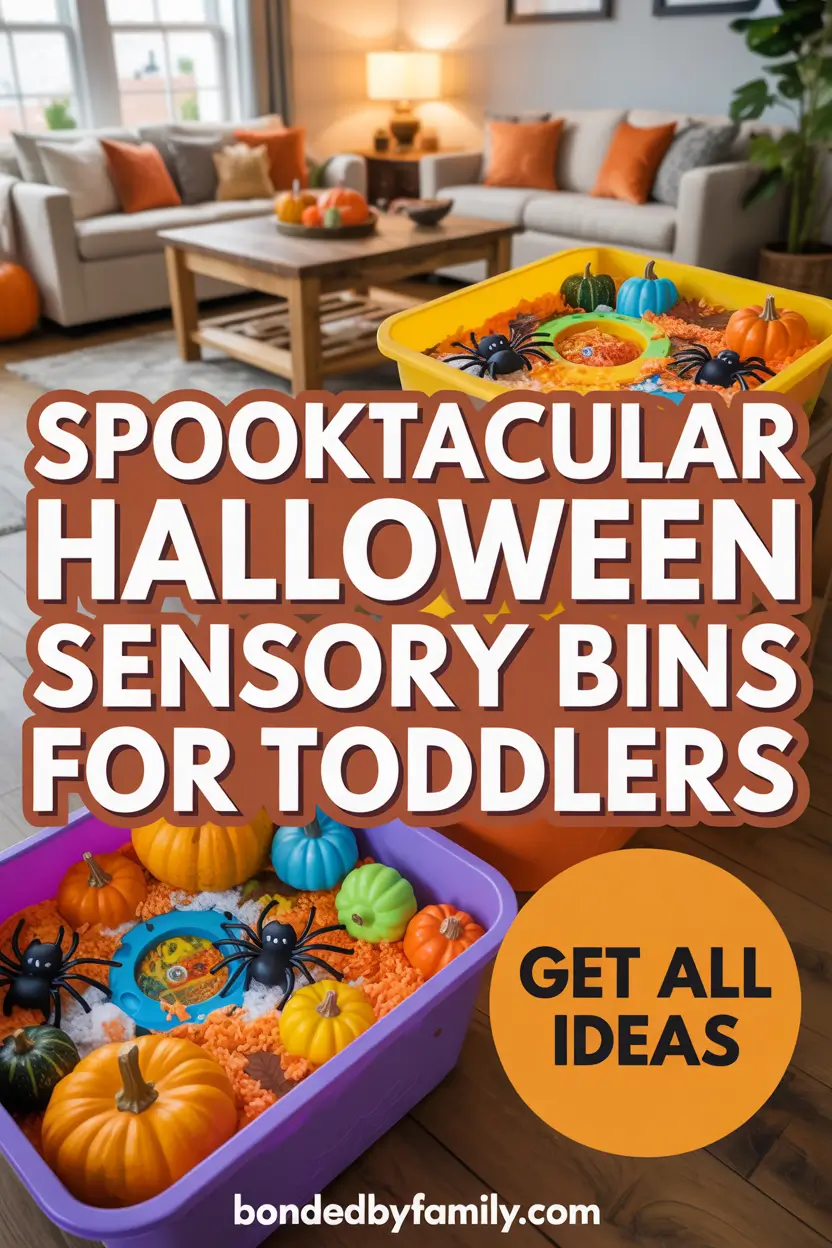Halloween sensory bins for toddlers transform ordinary October afternoons into magical explorations. These hands-on activities combine festive fun with developmental benefits, keeping little ones engaged while you prep for trick-or-treaters.
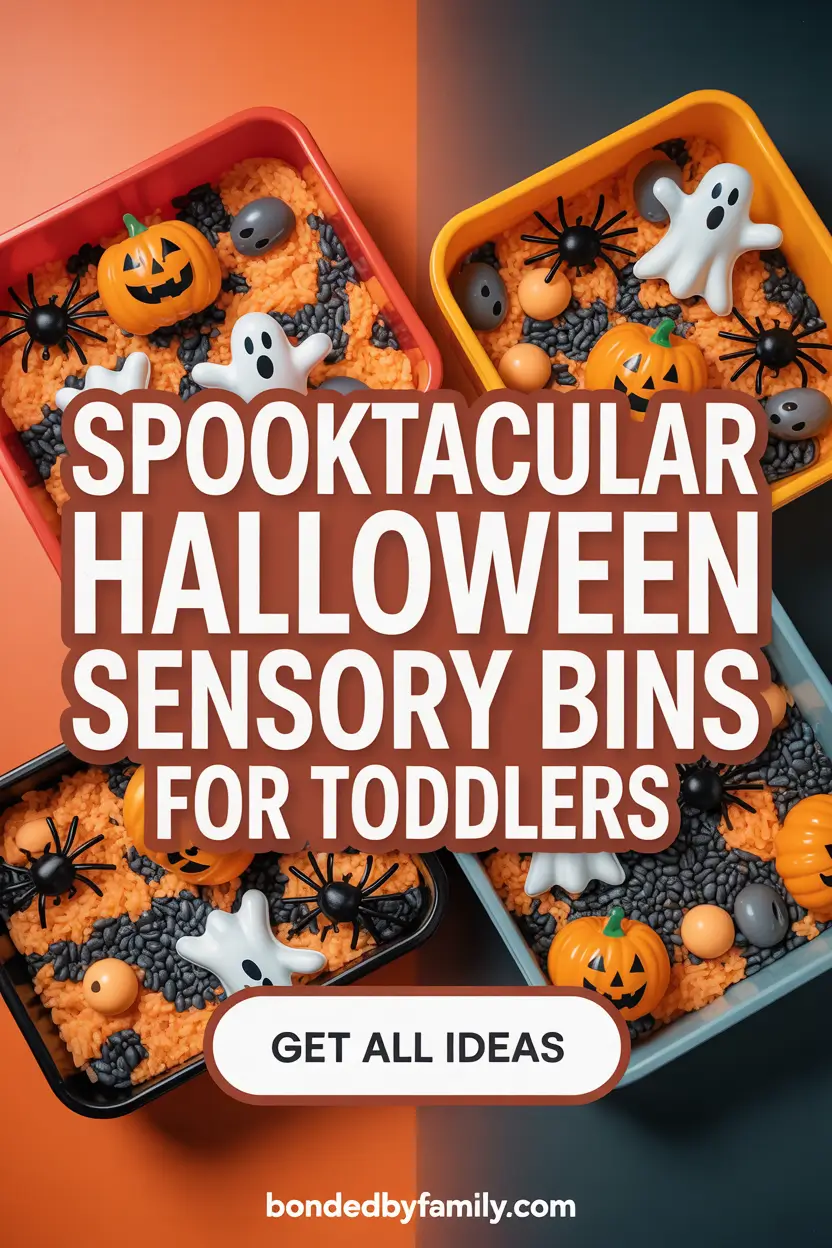
You know that moment when your toddler discovers something mesmerizing? That’s exactly what happens with a well-crafted sensory bin. These contained play spaces offer tactile adventures that develop fine motor skills, encourage imaginative play, and introduce seasonal concepts. But here’s the kicker – they’re ridiculously simple to create and can occupy busy hands for surprisingly long stretches.
Essential Materials for Halloween Sensory Success
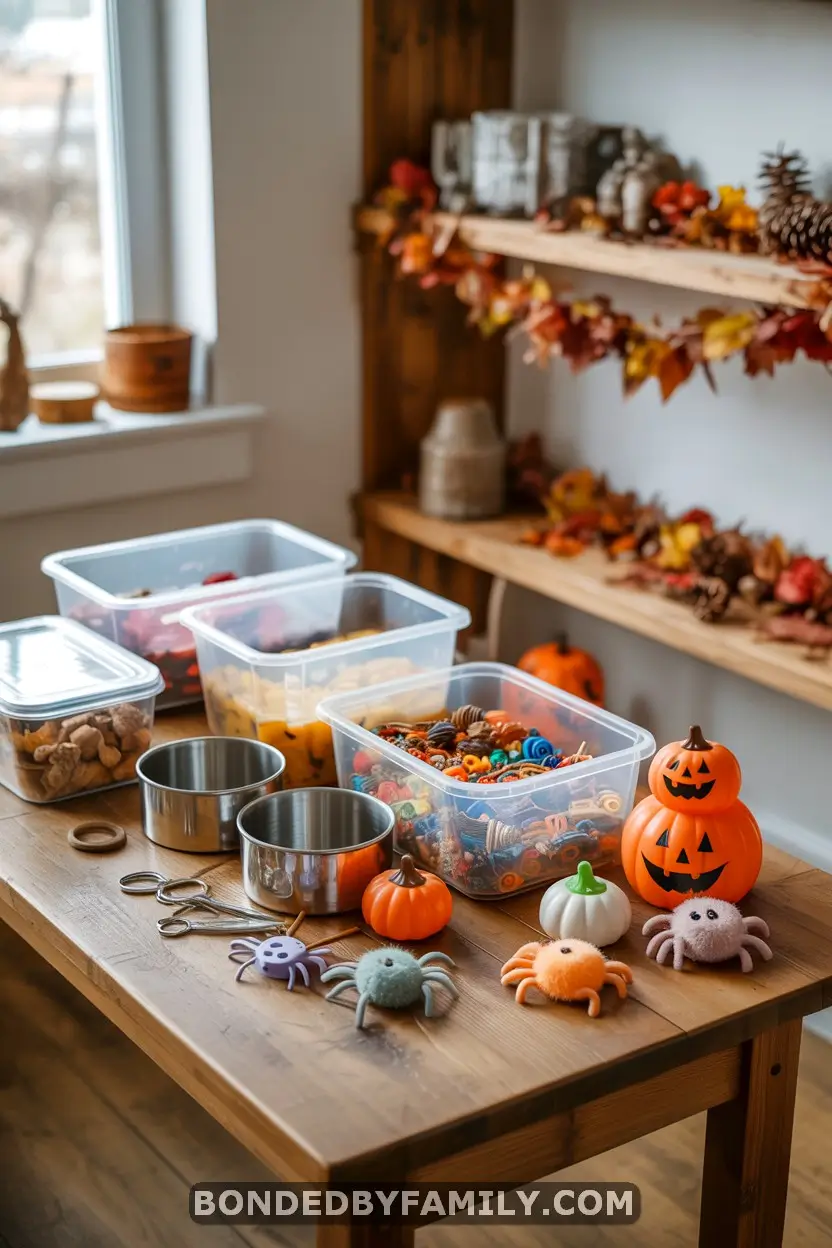
The foundation of any memorable sensory bin starts with the right base material. Rice dyed orange with food coloring creates an instantly festive foundation. Simply mix two cups of rice with a teaspoon of vinegar and several drops of orange food coloring in a zip-lock bag. Shake it up, spread it on parchment paper to dry, and you’ve got Halloween magic in under an hour.
Black beans offer another fantastic base that requires zero prep. Their dark color screams Halloween while their smooth texture provides satisfying sensory feedback. Mix them with orange split peas or candy corn (for supervised play) to create a striking color contrast that catches toddlers’ attention immediately.
Don’t overlook the power of themed add-ins. Mini plastic cauldrons from the dollar store become treasure holders. Rubber spiders and bats add creepy-crawly excitement without actual creepiness. Foam letters spelling “BOO” or “HALLOWEEN” sneak in early literacy exposure. Small scoops, tongs, and containers transform simple exploration into fine motor skill practice.
Creating Your First Spooky Sensory Experience
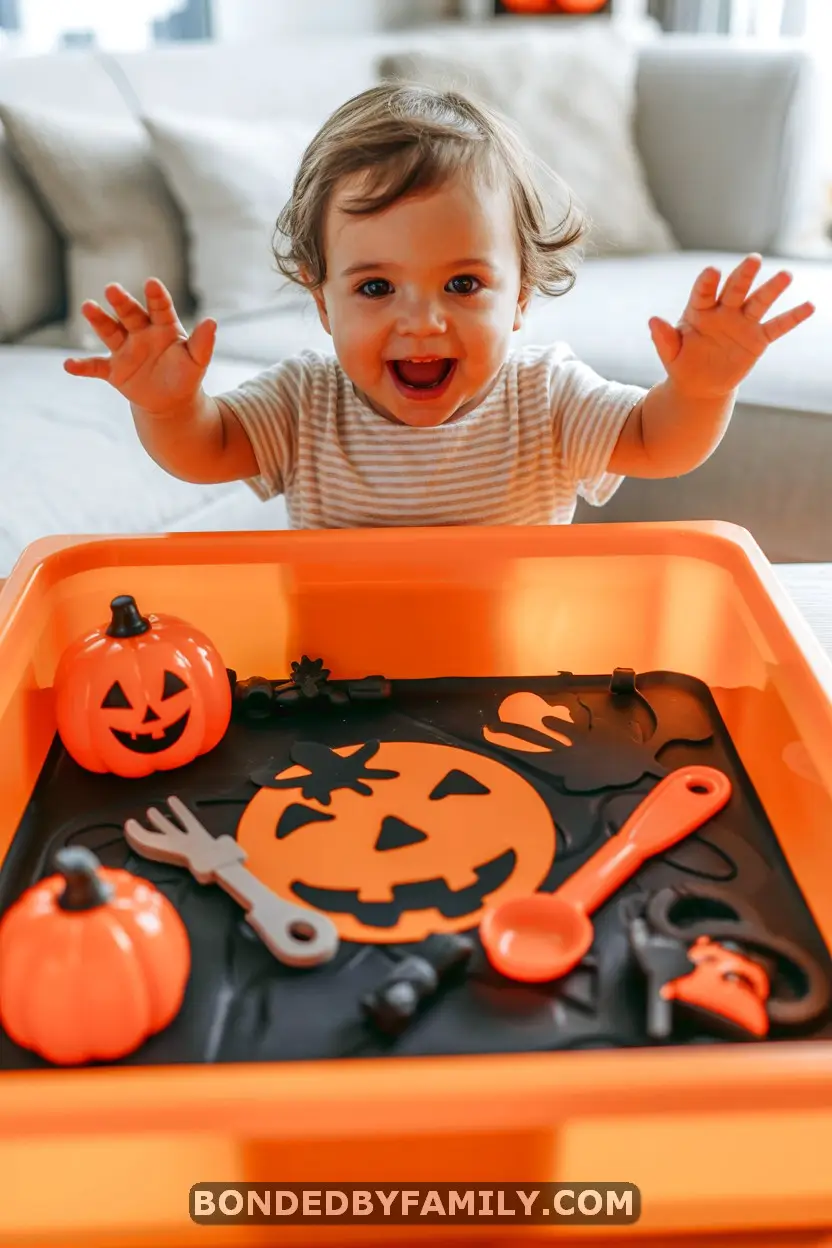
Start with a container that’s shallow enough for small arms to reach comfortably but deep enough to contain enthusiastic scooping. A clear plastic storage bin works perfectly – bonus points if you can find one in orange or black. Fill it about halfway with your chosen base material, leaving room for digging and pouring without creating a floor disaster.
Layer in your Halloween elements strategically. Bury small toys or trinkets for discovery moments. Create zones within the bin – perhaps a spider corner and a pumpkin patch area. This organization helps toddlers focus on different activities and extends play time naturally.
Temperature adds an unexpected sensory dimension. Try freezing small toys in ice cubes tinted with orange food coloring. As toddlers explore, the melting ice creates evolving textures and reveals hidden treasures. Or warm dried corn kernels slightly in the microwave (test temperature first!) for a cozy autumn feel that contrasts beautifully with room-temperature elements.
Monster Mash Sensory Variations
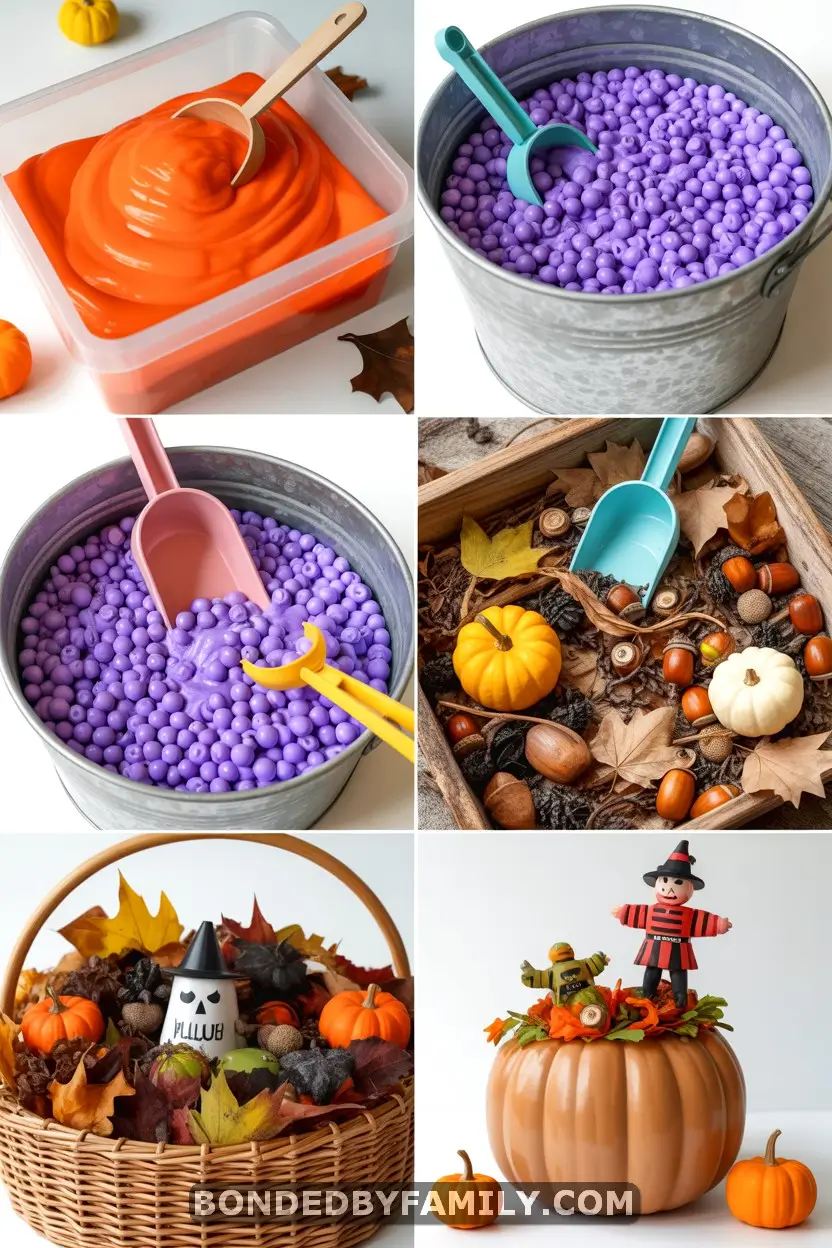
Slime enthusiasts, rejoice! Halloween offers the perfect excuse for ooey-gooey exploration. Mix clear glue with liquid starch and orange glitter for “monster goo” that stretches and squishes. Add plastic eyeballs or tiny rubber bats for spine-tingling discoveries. This variation works best with close supervision but delivers maximum engagement for texture-seeking toddlers.
Water beads soaked in Halloween colors create an entirely different sensory experience. These slippery spheres challenge pincer grasp while providing unique tactile input. Mix orange and black beads with floating plastic spiders for a “witch’s brew” theme. Set this bin in a bathtub or outside for worry-free water play.
Consider edible options for younger toddlers who are still exploring with their mouths. Cooked spaghetti dyed green becomes “zombie brains” perfect for squishing. Crushed graham crackers mixed with chocolate chips create “graveyard dirt” that’s safe to taste. These variations eliminate choking concerns while maintaining sensory richness.
Witch’s Kitchen Potion Station
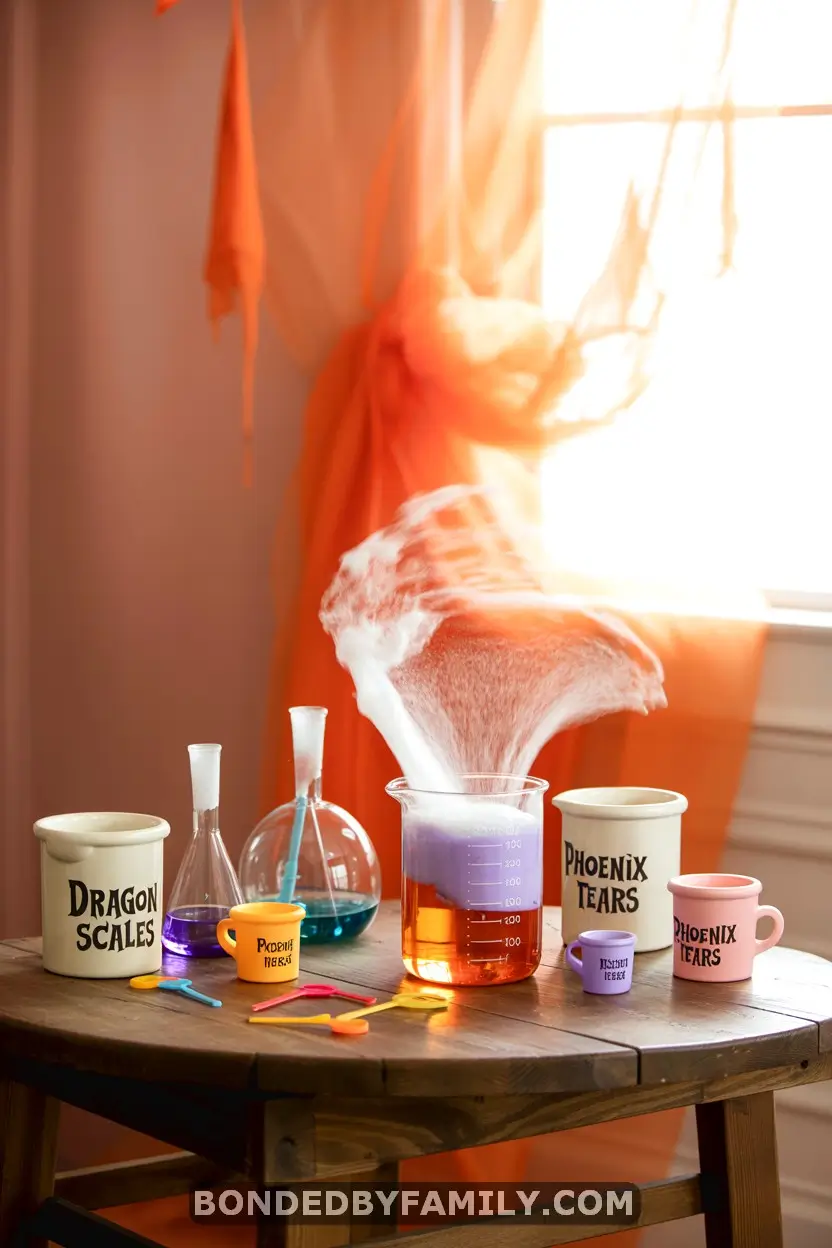
Transform sensory play into magical potion-making with simple kitchen science. Fill several small containers with water tinted different Halloween colors. Provide pipettes, medicine droppers, or turkey basters for transferring liquids between containers. Watch as toddlers become absorbed in color mixing and cause-and-effect exploration.
Add baking soda to one container and vinegar to another for supervised fizzing reactions. The bubbling “magic” never fails to produce squeals of delight. Sprinkle in biodegradable glitter for extra sparkle that won’t harm the environment when cleanup time arrives.
Label containers with silly potion names like “Spider Juice” or “Ghost Tears” using pictures for pre-readers. This adds imaginative play elements while subtly introducing print concepts. Provide measuring spoons and cups to incorporate early math skills naturally into the magical mixing.
Troubleshooting Common Sensory Bin Challenges
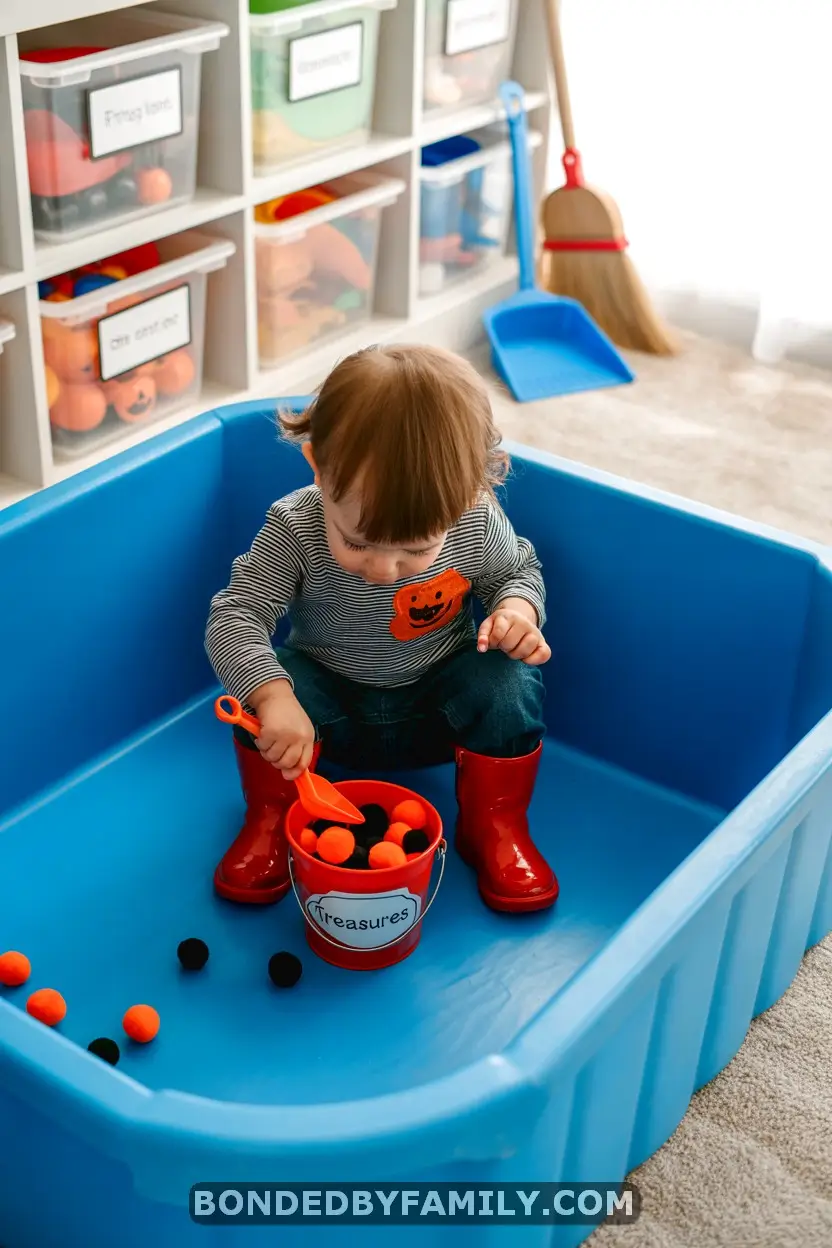
Let’s address the elephant – er, skeleton – in the room: mess management. Place a cheap plastic tablecloth or shower curtain under the bin for easy cleanup. Those dollar store finds become your best friends during sensory play. When rice inevitably escapes, simply gather the corners and funnel everything back into storage.
Some toddlers dive in immediately, while others need warming up. Start hesitant explorers with dry materials before introducing wet or slimy textures. Demonstrate playing with enthusiasm yourself – toddlers often mirror adult reactions. Use tools initially if direct hand contact feels overwhelming.
Keeping materials fresh extends bin life significantly. Store dry ingredients in airtight containers between play sessions. Wet or food-based bins need same-day disposal to prevent mold. Rotate themes every few days to maintain novelty – today’s pumpkin patch becomes tomorrow’s haunted forest with simple prop swaps.
Maximizing Developmental Benefits
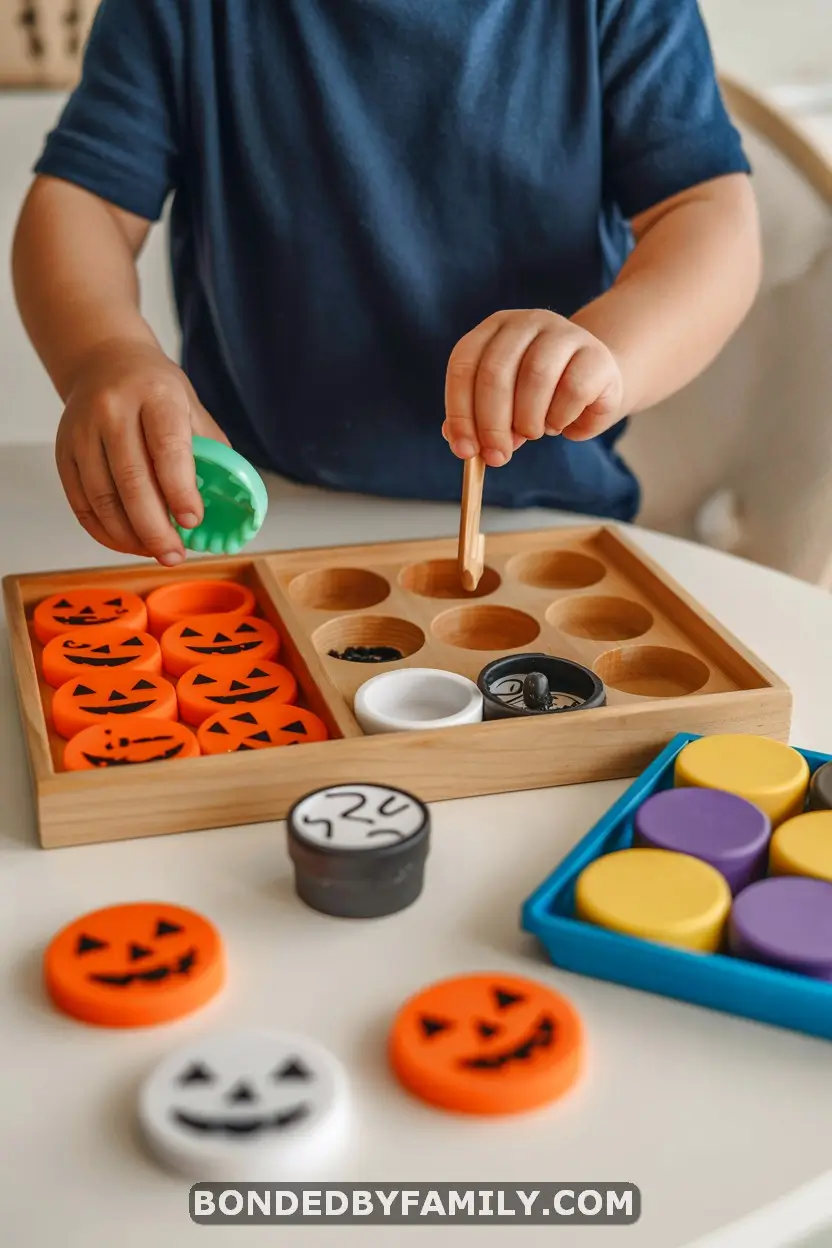
While your toddler thinks they’re just having Halloween fun, their brain is firing on all cylinders. Scooping and pouring develop hand-eye coordination essential for future writing skills. Sorting items by color or size introduces mathematical concepts painlessly. Describing textures builds vocabulary naturally through experience rather than memorization.
Incorporate counting games seamlessly. “Can you find five spiders?” or “Let’s put three pumpkins in the cauldron!” These simple prompts develop number sense without feeling like lessons. Add plastic letters to spell simple Halloween words, letting interested toddlers explore literacy at their own pace.
Social-emotional growth happens, too. Sensory bins provide acceptable outlets for big feelings – squishing and squeezing release tension safely. Sharing bins with siblings or friends practices turn-taking and cooperation. The contained nature offers control to toddlers navigating an increasingly complex world.
Conclusion
Halloween sensory bins for toddlers offer far more than momentary entertainment. They create memorable experiences that blend seasonal celebration with genuine developmental support. These simple setups transform ordinary October days into adventures filled with discovery, learning, and yes, manageable mess.
The beauty lies in their flexibility. Today’s creation might feature pumpkins and spiders, while tomorrow’s explores witches and ghosts. Each variation offers new opportunities for growth, creativity, and family bonding. So grab that storage bin, embrace the inevitable rice scatter, and watch your toddler’s eyes light up with Halloween wonder.
